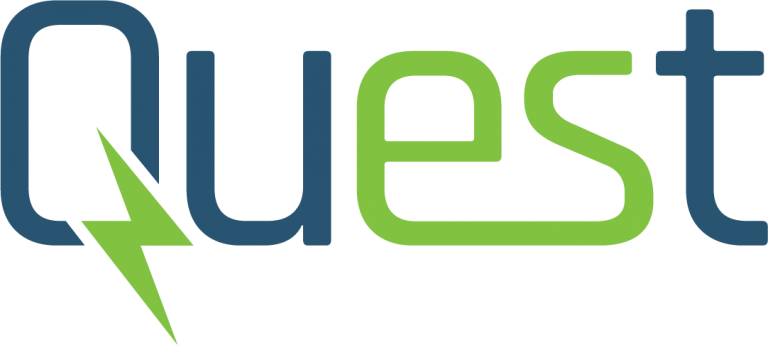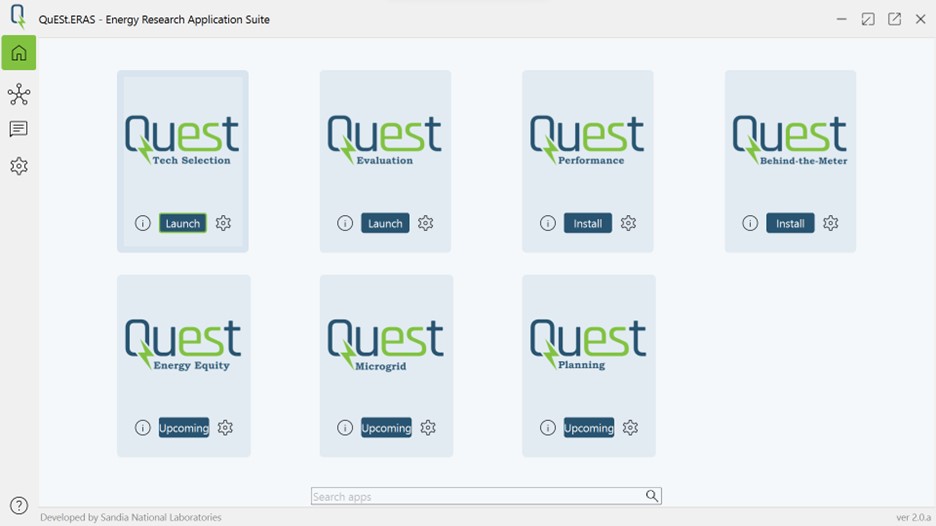
What is QuESt?
- QuESt Data Manager manages the acquisition of data.
- QuESt Valuation estimates the potential revenue generated by energy storage systems when providing ancillary services in the electricity markets.
- QuESt BTM (Behind-The-Meter) calculates the cost savings for time-of-use and net energy metering customers utilizing behind-the-meter energy storage systems.
- QuESt Technology Selection supports in selecting the appropriate energy storage technology based on specific applications and requirements.
- QuESt Performance evaluates the performance of energy storage systems in different climatic conditions.
- QuESt Microgrid supports microgrid design and simulation considering energy storage as a key component.

- User-Friendly Access: Users can easily find and install applications that suit their specific needs.
- Isolated Environments: Upon installation, each application creates an isolated environment. This ensures that applications run independently, preventing conflicts, and enhancing stability.
- Simultaneous Operation: Multiple applications can be installed and operated simultaneously, allowing users to leverage different tools without interference.
- Integration of Applications: Users can create work processes that integrate multiple apps by assembling pipelines using plugin extensions. This modular approach allows for the flexible composition of analytics workflows tailored to specific needs.
- Workflow Management: The workspace supports the selection, assembly, connection, and post-processing of data and tools. This structured approach streamlines the analytics process, from data preparation to visualization, making it easier to manage and understand.
- Data Insights: Users can select datasets and ask questions about the data, with QuESt GPT providing insights based on the data’s characteristics. This interaction model simplifies complex data analysis, making it accessible to users without deep technical expertise.
- Utilization of Open-source LLMs: By leveraging advanced open-source LLMs such as GPT4All, QuESt GPT can perform sophisticated data analytics tasks, such as characterizing and visualizing large datasets. This enables users to gain deeper insights from their data, supporting more informed decision-making at no costs.
What are the key innovations of QuESt 2.0?
How is QuESt 2.0 different from the other tools in Energy Storage Analytics?
Key Competitive Advantages of QuESt 2.0:
- Unified Platform: Unlike individual tools that offer limited capabilities in specific topics, QuESt 2.0 serves as a comprehensive platform that integrates multiple applications for energy storage analytics. This integration allows users to access a wide range of tools and functionalities within a single environment, streamlining the workflow and enhancing productivity.
- Advanced Data Analytics: With the inclusion of QuESt GPT for advanced data analytics, QuESt 2.0 utilizes generative AI to provide deeper insights from diverse data sources. This capability is not commonly found in other tools, giving QuESt 2.0 a significant technological edge.
- Flexibility and Scalability: QuESt 2.0’s modular design allows for the easy integration of new tools and applications, ensuring that the platform remains relevant and adaptable to future developments in energy storage analytics.
- Collaborative Development: As an open-source platform, QuESt 2.0 benefits from contributions by a wide community of developers, enhancing its capabilities and ensuring continuous improvement.
For more information, contact Tu Nguyen.
